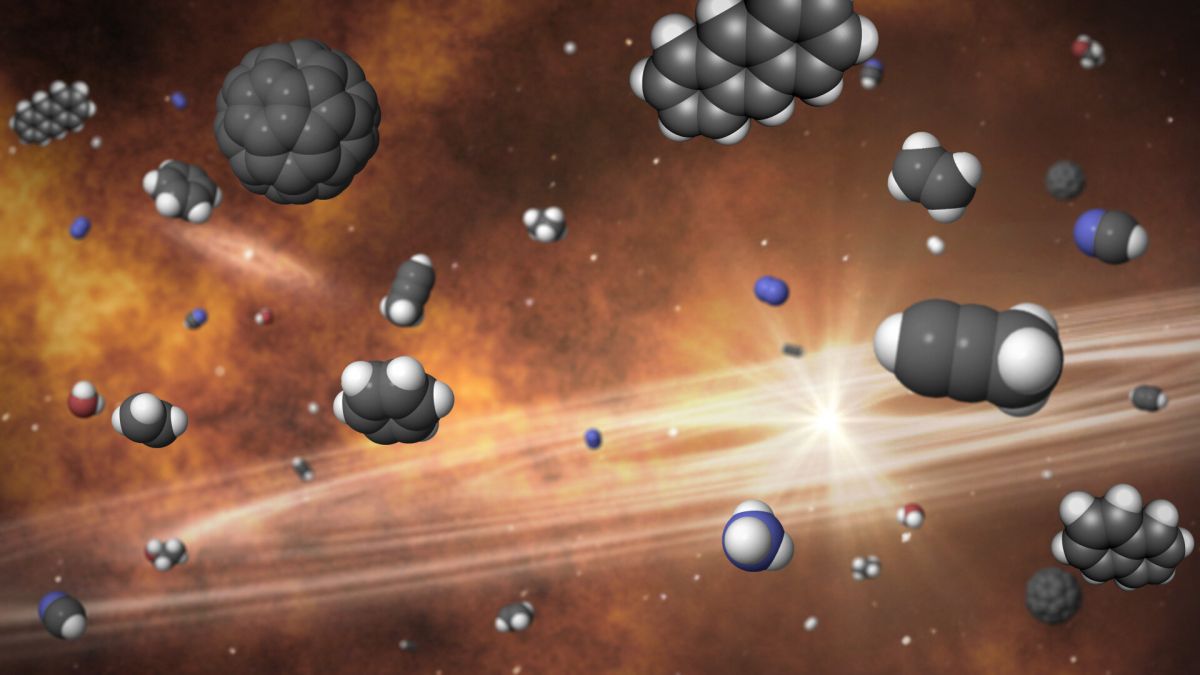
A “soup” of molecules in a distant star-forming cloud contains compounds that are considered the essential building blocks for life, astronomers have found.
These molecules can contribute to the construction of amino-acids, which themselves form the basis of genetic material and are believed to have been essential in the development of the first microorganisms on Earth.
The prebiotic molecules were found in a star cluster within the Perseus Molecular Cloud called IC348. The stars in the cluster are estimated to be very young, between 2 and 3 million years old. For comparison, our “middle-aged” sun is around 4.6 billion years old.
“[The cloud] is an extraordinary laboratory of organic chemistry,” Susan Iglesias-Groth, a scientist at Instituto de Astrofísica de Canarias (IAC) and research co-author, said in a statement (opens in new tab). “These are complex molecules of pure carbon which often occur as building blocks for the key molecules of life.”
Related: ‘We can find life outside the solar system in 25 years,’ researcher says
The 500-light-year-wide Perseus Cloud, in which these molecules were discovered, is one of the closest active star-forming regions to the solar system at just 1,000 light-years away.
Many of the infant stars found in star clusters within the cloud are surrounded by disks of gas and dust. It is within these “protoplanetary disks” that dense clumps of material collapse under the pull of gravity to form planets, moons, asteroids, and comets — the usual building blocks of planetary systems that arise in a process similar to the one that once birthed our solar system.
The detection of prebiotic molecules at such a site and so close to the star cluster IC348 could indicate that as young planets form, they accrete material that contains molecules that eventually contribute to the formation of complex organic molecules.
“These key molecules could have been supplied to the nascent planets in the protoplanetary disks and could in this way help to produce there a route towards the molecules of life,” Martina Marin-Dobrincic, a scientist at Universidad Polictécnica de Cartagena and research co-author, said in the statement.
Iglesias-Groth, who also found giant carbon molecules called fullerenes in the same cloud in 2019, and the team discovered the presence of molecular hydrogen (H2), hydroxyl (OH), water (H2O), carbon dioxide (CO2), and ammonia (NH3) as well as several carbon-based molecules. These latter molecules could play a role in forming more complex hydrocarbons and prebiotic molecules including hydrogen cyanide (HCN), ethane (C2H6), hexatrine (C6H2), and benzene (C6H6).
The team also found more complex molecules like polycyclic aromatic hydrocarbons (PAH) and more fullerenes in the form of carbon-60 (C60), and carbon-70 (C70).
“IC 348 seems to be very rich and diverse in its molecular content,” Iglesias-Gorth said. “The novelty is that we see the molecules in the diffuse gas from which stars and protoplanetary disks are forming.”
Related stories:
Iglesias-Groth and Marin-Dobrincic made their discovery using data collected by NASA’s now retired Spitzer Space Telescope and they intend to follow up the observations with the more powerful James Webb Space Telescope (JWST).
“The spectroscopic capacity of the JWST could provide details about the spatial distribution of all these molecules, and extend the present search to others which are more complex, giving higher sensitivity and resolution which are essential to confirm the very probable presence of amino acids in the gas in this and in other star-forming regions,” Iglesias-Groth concluded.
The discovery of these compounds is detailed in a paper published in the Monthly Notices of the Royal Astronomical Society (MNRAS). (opens in new tab)
Follow us on Twitter @Spacedotcom or on Facebook.



